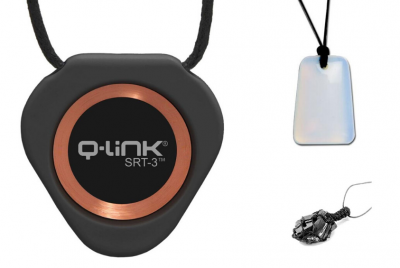When worn correctly, both Bluetooth and wired earbuds offer a lightweight and comfortable way to listen…
Low EMF Baby Monitors for Minimizing Radiation In The Nursery

*We may earn a commission for purchases made using our links. Please see our disclosure to learn more.
Baby monitors provide a simple and convenient way for parents to keep an eye on their children even while not physically present. Unfortunately, there may be a price to pay for that convenience.
There is a large body of evidence that suggests EMF (electromagnetic field) radiation of the type emitted by baby monitors has significant long-term health effects. Baby monitors emit radiofrequency (RF) EMF radiation. While no studies have looked at the impact of RF-EMF radiation specifically from a baby monitor, researchers have looked at the general health impacts of RF-EMFs. For example, one 2012 study found that exposure to EMFs could cause problems with fertility in males, as well as reproductive changes to babies in the womb. Other health conditions such as glioblastoma have also been linked to RF-EMF exposure. Sensitive individuals also report flu-like symptoms such as fatigue, depression, and loss of appetite when in areas that are high in EMF radiation.
Baby monitors are powered by electricity, and electricity produces another type of EMF — extra-low frequency (ELF) EMFs. ELF-EMFs produce a much slower wave than RF-EMFs, and although they are generally regarded as safe, independent research indicates that may not be the case. Researchers in 2005 examined the proximity of homes to power lines and compared that to instances of childhood leukemia. They found a strong association, indicating that ELF-EMFs may be to blame.
One theory is that because of their smaller size and thinner skulls, children are especially vulnerable to the effects of EMF. And because babies are so tiny, and their skulls are so thin, their risk is even greater.
The government does regulate EMF production, but their regulations do not take into account the cumulative amount of EMF in the atmosphere, nor the fact that children are more sensitive to exposure.
So what does this mean for you? It means that anything you can do now to reduce your baby’s EMF exposure is a step in the right direction for your child’s long-term health. The baby monitor is a great place to start, especially since it may be near your child for many hours each day.
How Baby Monitors Work
Baby monitors transmit audio and video signals from the baby monitor to a base unit. Some monitors allow for two-way audio functionality, as well.
While all baby monitors emit some level of EMF, some are safer than others. The monitors that are considered the safest emit radiation in the FM radio frequency range. But even the safest of monitors produce some level of EMF radiation.
Most baby monitor models don’t take EMF radiation into consideration, beyond complying with legal regulations. These models run in the higher microwave range. This is the same type and at the same high level as WiFi and cell phones. This is because of the connection required to send the video signal. These levels of EMF are considered harmful to adults and worse for children.
Analog vs Digital
A baby monitor will use either an analog or a digital signal. Analog models are sound-only monitors. They produce ELF-EMF, usually at 40 MHz. Analog models are the safest, but they are becoming harder to find in the U.S (don’t worry, there are still some solid choices out there, which we’ve listed further down the page).
Digital monitors typically offer more features than analog monitors but they operate through WiFi, Bluetooth, DECT (digital enhanced cordless telecommunications) or FHSS (frequency-hopping spread spectrum). These technologies produce RF-EMF radiation at the 2.4 GHz (or 2400 MHz) frequency. This makes digital monitors far more dangerous than analog monitors.
If you feel you need more features than analog offers, the next best thing would be low-emissions digital monitors or models with an eco mode, or sound activation. These units don’t produce high emissions constantly. They power up only when they detect sound, which offers a moderate level of EMF protection.
Forgoing a Monitor
The absolute lowest EMF option out there is to simply forgo the use of a baby monitor all together. Not using a monitor is one step you can take to lower your baby’s exposure to EMF radiation, and the reality is that parents and infants survived many years before baby monitors were ever invented. They are nice to have, but not a necessity. If you are able to go without a monitor, you may want to consider doing so.
Best Low EMF Baby Monitors Reduction
If you can’t imagine life without a baby monitor, you’re not alone. For some parents, the risk of leaving the baby unattended outweigh the risks of EMF exposure. In those instances, it’s best to find the lowest EMF baby monitor that suits your needs.
Finding low-to-no-EMF options out there can be difficult. Fortunately, we’ve done some of the hard work for you and combed through the internet to find a few solid options.
Safest – Analog Monitors
Analog monitors are harder to come by these days, but they are absolutely the safest choice. At the time of this writing, we could not find any new versions available. Most have been discontinued by the manufacturer, so you may have to seek out used options.
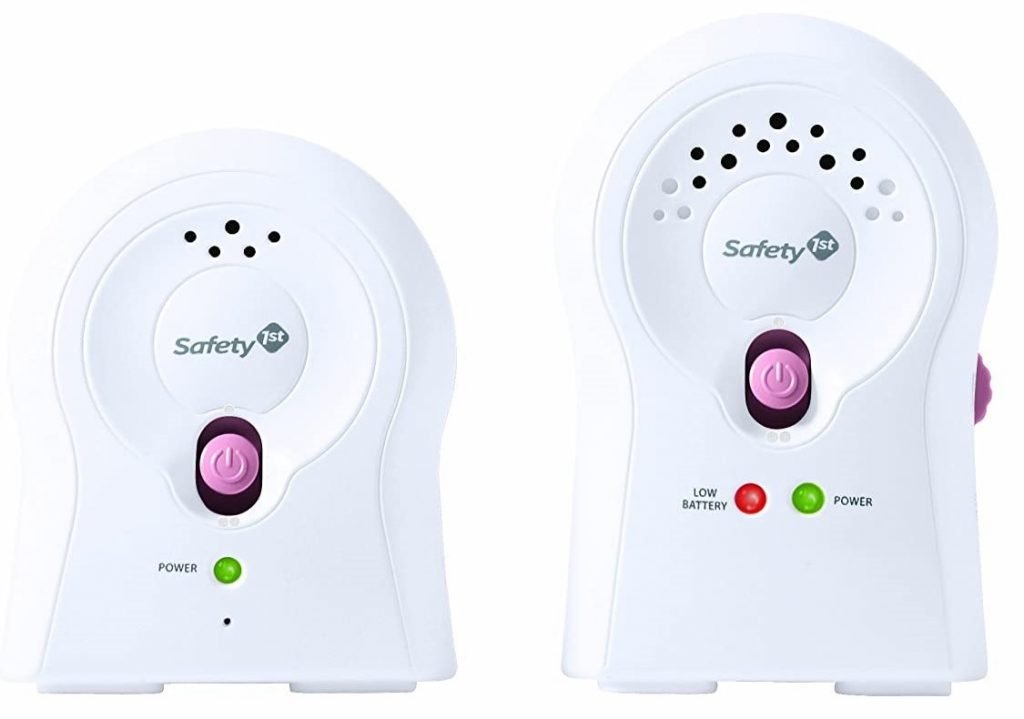
While scouting the pre-owned market, keep an eye out for Safety 1st’s Crystal Clear Audio Monitor. This is a no-frills, audio-only monitor that operates at 49 MHz. . This unit offers the ability to be plugged into the wall or operated with batteries. When in battery mode, it can be clipped onto a belt for easy portability. And while it may lack any video ability, reviewers remarked on the quality of the audio that it does provide.
Next Best – Low-emission Digital Monitors
We were able to locate two low-emissions digital models that operate at 900 MHz. This is still higher than analog models but much lower than the typical digital models. Both are voice-activated and available for under $100.

Sony MTM-900 900MHz BabyCall System — This audio-only unit features alerts with both sound and lights. It was discontinued by the manufacturer, but can still be found from private sellers. Sony’s baby monitor was particularly useful because it offered the ability to try multiple FM stations, opting for the one with the clearest signal.
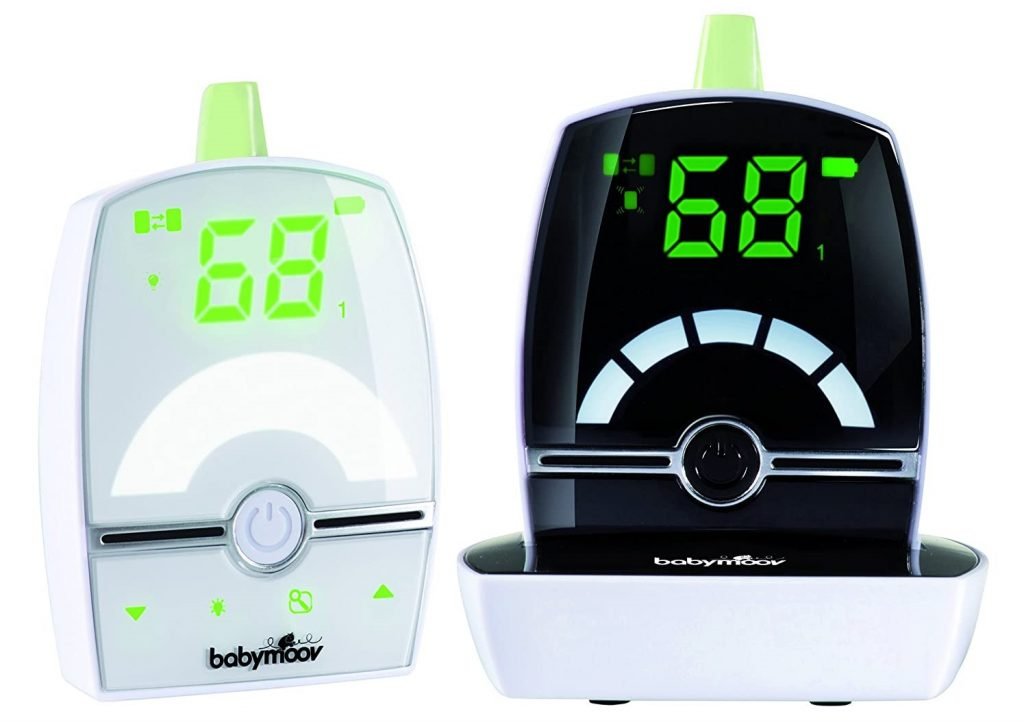
Babymoov Premium Care — This is a low-emissions model that has great range (3,300 feet). It is sound-activated and can also double as a walkie-talkie, allowing you to talk to your baby from another room as well as hear when the baby cries. The device even senses the temperature in the baby’s room and displays it on the monitor. This model was also discontinued by the manufacturer, but may be available second hand.
Digital Monitors with Video and Sound Activation/Eco Mode
The monitors reviewed above all have one thing in common: they only allow for audio monitoring. Some parents need to be able to see their infants. For the family that feels they can’t do without video, these models are not technically low-emissions (they operate at 2.4 GHz). However, they do offer sound activation or eco mode for EMF reduction.
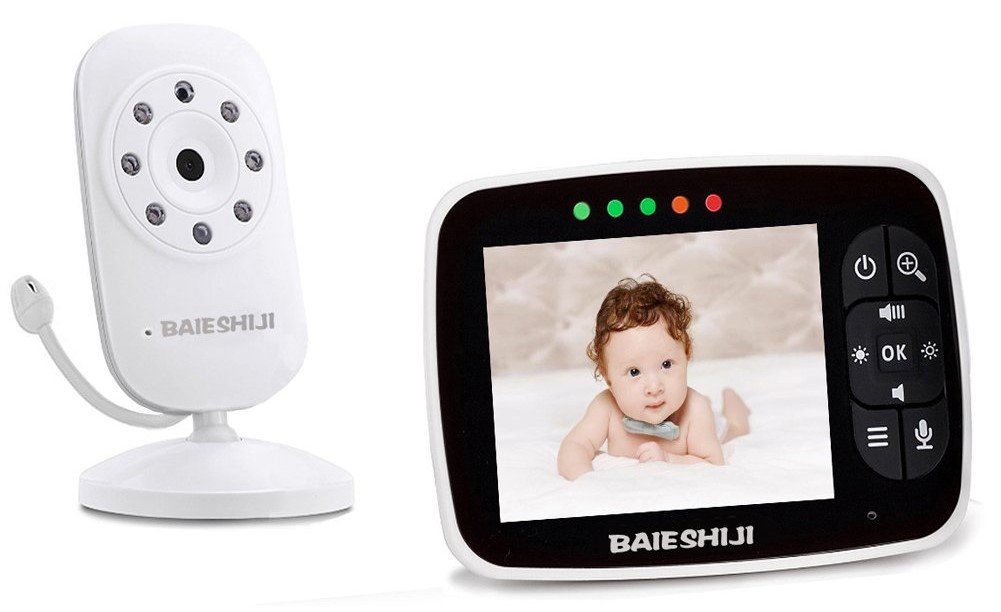
Baeishiji Baby Monitor — This highly rated unit has a 3.5-inch LCD screen and features night vision. The built-in camera displays on the base unit in full color and in real-time and an in-unit microphone picks up on sounds. The Baeishiji Baby Monitor can even play pre-programmed lullabies. And it has two-way audio functionality, so you can make up some lullabies of your own, too.
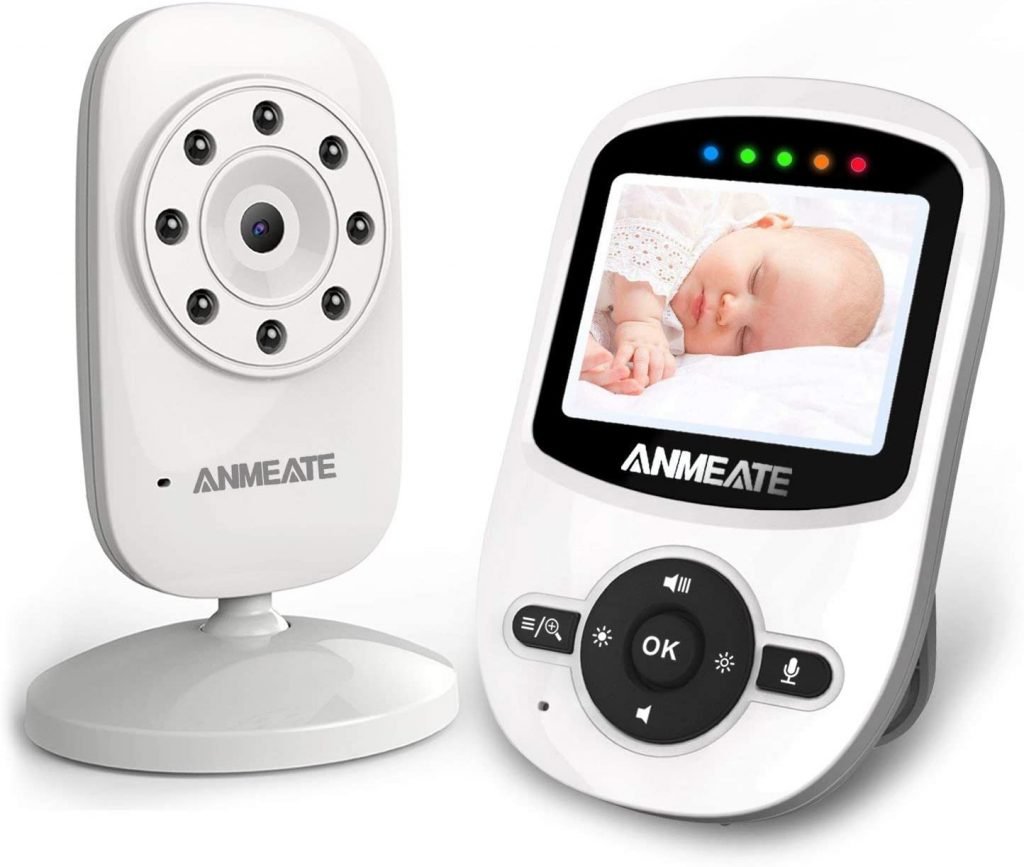
Anmeate Video Baby Monitor — Affordable and functional, Anmeate’s baby monitor features a 2.4″ screen with zoom functionality. The unit is capable of monitoring the room’s temperature and has 8 integrated LED lights to assist with night vision. This monitor also allows you to directly communicate with your baby with just the press of a button. The battery lasts up to 8 full hours on eco mode and the unit offers the ability to plug into a wall outlet, as well. You can use the monitor to pan or tilt the camera, set an alarm, play a lullaby, and even to expand the number of cameras you have set up. This is a feature-rich monitor at a budget-friendly price point.
Overall Top Pick for Digital Monitors
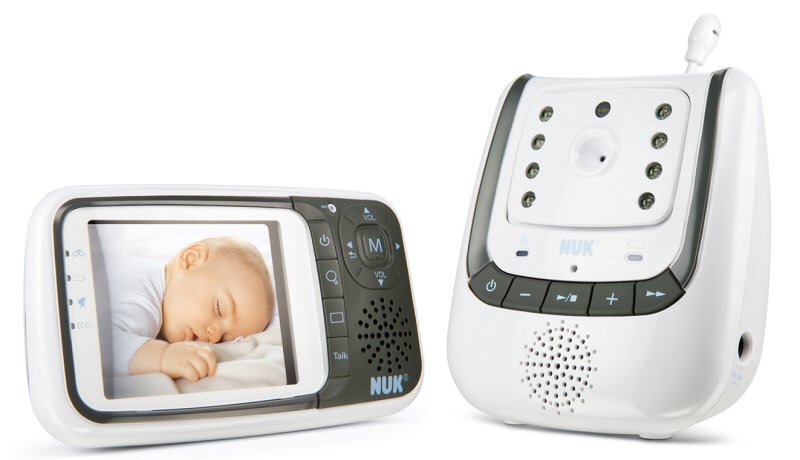
Nuk Baby Monitor with Eco Control+ Video — We’ve put this in a section of its own because while it’s our favorite wireless monitor, it’s not available in the US. The manufacturer will ship to American addresses, but the shipping makes the unit quite costly.
This monitor features “full-eco mode” that reduces EMF exposure by 90%. It offers night vision, 2-way communication, and a power-saving feature. The 2.8-inch display can set your mind at ease, and it even includes a temperature sensor that notifies you of any drastic temperature changes.
Hard Wire Your Monitor for Best EMF Protection
Hard-wiring is the safest method of all — it bypasses WiFi altogether. It will mean running an Ethernet cable to your baby’s room, but this method offers the highest level of EMF reduction. The true challenge with this method is finding a baby monitor that is capable of being hardwired. Very few exist and they can be difficult to find.
Fortunately, there is a potential workaround. It is possible to take a hard wired security camera and turn it into baby monitor. Many cameras have accompanying apps that allow you to view the footage in real time, just as you would with a traditional baby monitor.
If you’re considering this option for your nursery, Wyze’s Cam v3 is both affordable and easy to use. It has many features you would expect a traditional baby monitor to have and it is considerably less expensive. The base camera features color night vision and 24/7 continuous recording. It also has motion and sound detection, sending an alert straight to your phone if the device picks up any movement or noise. Wyze does not require a subscription to use their camera and free cloud storage is available, as well.
Monitoring Your Baby’s Room
Once you’ve purchased a lower-EMF baby monitor, you may also want to consider investing in an EMF meter. EMF meters are relatively inexpensive devices that can measure the amount of EMF radiation present in the air. This will allow you to design your nursery in a way that is mindful of atmospheric EMF, as well as to track your baby monitor’s EMF output over time. You can also use an EMF meter to check the overall levels in your home.
When purchasing an EMF meter, keep in mind that they are not all created equally. Some offer a lot of sensitivity but not a lot of accuracy. Others can only sense ELF-EMFs.
One EMF monitor you should look at is the Trifield TF2, which can detect all three forms of EMFs — electric, magnetic, and microwave. It features a large display screen that alerts you when the values are in the dangerous range, and it’s capable of sensing both ELF and RF-radiation.
A Final Word
Baby monitors offer the ability to watch your child from another room as they nap or play. Many parents swear by the peace of mind they provide, but as more information about the harmful effects of EMFs comes out, it’s unclear just how safe these monitors are. At the very least, the evidence suggests that EMFs are worth considering when you are in the market for a new monitor.
Regardless of which monitor you choose, you should locate it as far from the baby as possible without giving up functionality. The closer your baby is to EMF radiation, the more they will absorb. It’s recommended to keep your baby monitor about 10 feet away from the crib at a minimum. Be mindful of that distance when designing your nursery, and also when deciding on a place to keep your base unit. For optimum safety, use an EMF meter to help ensure that your nursery is free from EMF radiation.
We all want to do what’s best for our kids. When it comes to EMF, it’s clear that reducing their exposure is the safest option of all. While that can entail many things — switching your household to wired internet, for example, or purchasing an EMF meter — one of the first steps you can take is purchasing a low-EMF baby monitor. Reducing their exposure now may help protect them from health problems later in life.
The monitors in this article are some of the best on the market for those concerned with EMF radiation. 


